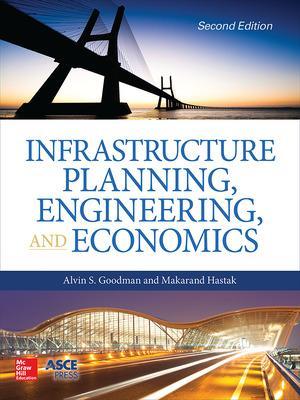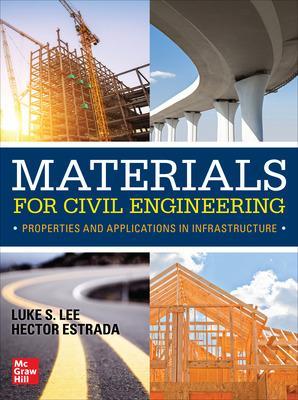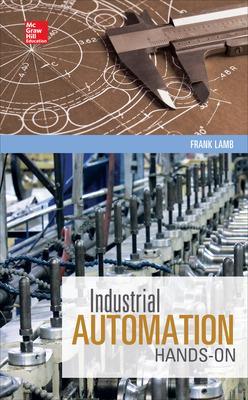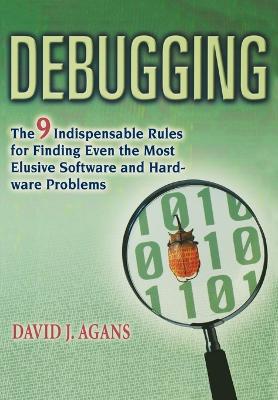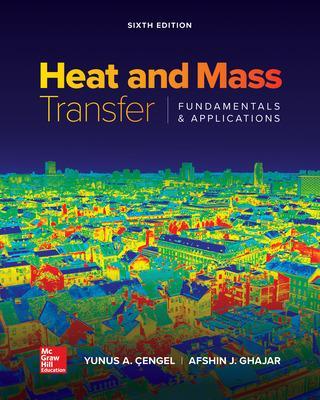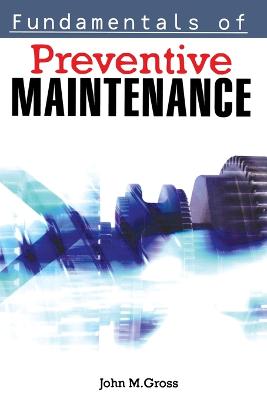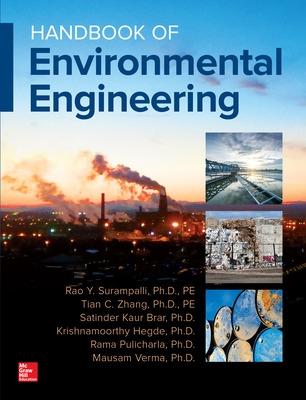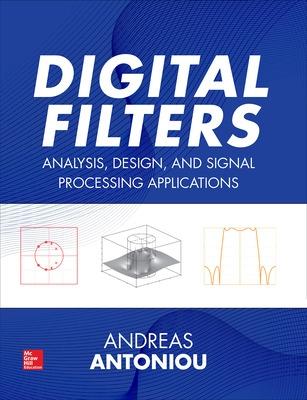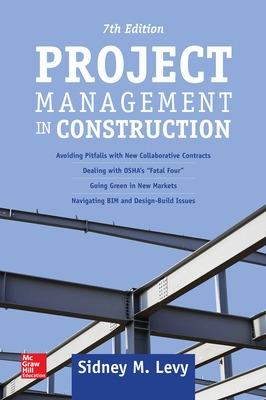Automatic Control Systems, Tenth Edition
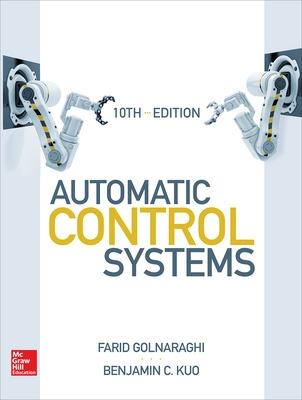 portes grátis
portes grátis
Automatic Control Systems, Tenth Edition
Kuo, Benjamin; Golnaraghi, Farid
McGraw-Hill Education
03/2017
864
Dura
Inglês
9781259643835
15 a 20 dias
1669
CHAPTER 1 Introduction to Control Systems
1-1 Basic Components of a Control System
1-2 Examples of Control-System Applications
1-2-1 Intelligent Transportation Systems
1-2-2 Steering Control of an Automobile
1-2-3 Idle-Speed Control of an Automobile
1-2-4 Sun-Tracking Control of Solar Collectors
1-3 Open-Loop Control Systems (Nonfeedback Systems)
1-4 Closed-Loop Control Systems (Feedback Control Systems)
1-5 What Is Feedback, and What Are Its Effects?
1-5-1 Effect of Feedback on Overall Gain
1-5-2 Effect of Feedback on Stability
1-5-3 Effect of Feedback on External Disturbance or Noise
1-6 Types of Feedback Control Systems
1-7 Linear versus Nonlinear Control Systems
1-8 Time-Invariant versus Time-Varying Systems
1-9 Continuous-Data Control Systems
1-10 Discrete-Data Control Systems
1-11 Case Study: Intelligent Vehicle Obstacle Avoidance-LEGO MINDSTORMS
1-12 Summary
CHAPTER 2 Modeling of Dynamic Systems
2-1 Modeling of Simple Mechanical Systems
2-1-1 Translational Motion
2-1-2 Rotational Motion
2-1-3 Conversion between Translational and Rotational Motions
2-1-4 Gear Trains
2-1-5 Backlash and Dead Zone (Nonlinear Characteristics)
2-2 Introduction to Modeling of Simple Electrical Systems
2-2-1 Modeling of Passive Electrical Elements
2-2-2 Modeling of Electrical Networks
2-3 Introduction to Modeling of Thermal and Fluid Systems
2-3-1 Elementary Heat Transfer Properties
2-3-2 Elementary Fluid System Properties
2-4 Linearization of Nonlinear Systems
2-4-1 Linearization Using Taylor Series: Classical Representation
2-5 Analogies
2-6 Project: Introduction to LEGO MINDSTORMS NXT Motor-Mechanical Modeling
2-7 Summary
References
Problems
CHAPTER 3 Solution of Differential Equations of Dynamic Systems
3-1 Introduction to Differential Equations
3-1-1 Linear Ordinary Differential Equations
3-1-2 Nonlinear Differential Equations
3-2 Laplace Transform
3-2-1 Definition of the Laplace Transform
3-2-2 Important Theorems of the Laplace Transform
3-2-3 Transfer Function
3-2-4 Characteristic Equation
3-2-5 Analytic Function
3-2-6 Poles of a Function
3-2-7 Zeros of a Function
3-2-8 Complex Conjugate Poles and Zeros
3-2-9 Final-Value Theorem
3-3 Inverse Laplace Transform by Partial-Fraction Expansion
3-3-1 Partial Fraction Expansion
3-4 Application of the Laplace Transform to the Solution of Linear Ordinary Differential Equations
3-4-1 First-Order Prototype System
3-4-2 Second-Order Prototype System
3-4-3 Second-Order Prototype System-Final Observations
3-5 Impulse Response and Transfer Functions of Linear Systems
3-5-1 Impulse Response
3-5-2 Time Response Using the Impulse Response
3-5-3 Transfer Function (Single-Input, Single-Output Systems)
3-6 Systems of First-Order Differential Equations: State Equations
3-6-1 Definition of State Variables
3-6-2 The Output Equation
3-7 Solution of the Linear Homogeneous State Equation
3-7-1 Transfer Functions (Multivariable Systems)
3-7-2 Characteristic Equation from State Equations
3-7-3 State Equations from the Transfer Function
3-8 Case Studies with MATLAB
3-9 Linearization Revisited-the State-Space Approach
3-10 Summary
References
Problems
CHAPTER 4 Block Diagrams and Signal-Flow Graphs
4-1 Block Diagrams
4-1-1 Modeling of Typical Elements of Block Diagrams in Control Systems
4-1-2 Relation between Mathematical Equations and Block Diagrams
4-1-3 Block Diagram Reduction
4-1-4 Block Diagrams of Multi-Input Systems: Special Case-Systems with a Disturbance
4-1-5 Block Diagrams and Transfer Functions of Multivariable Systems
4-2 Signal-Flow Graphs
4-2-1 SFG Algebra
4-2-2 Definitions of SFG Terms
4-2-3 Gain Formula for SFG
4-2-4 Application of the Gain Formula between Output Nodes and Noninput Nodes
4-2-5 Simplified Gain Formula
4-3 State Diagram
4-3-1 From Differential Equations to State Diagrams
4-3-2 From State Diagrams to Transfer Functions
4-3-3 From State Diagrams to State and Output Equations
4-4 Case Studies
4-5 MATLAB Tools
4-6 Summary
References
Problems
CHAPTER 5 Stability of Linear Control Systems
5-1 Introduction to Stability
5-2 Methods of Determining Stability
5-3 Routh-Hurwitz Criterion
5-3-1 Routh's Tabulation
5-3-2 Special Cases When Routh's Tabulation Terminates Prematurely
5-4 MATLAB Tools and Case Studies
5-5 Summary
References
Problems
CHAPTER 6 Important Components of Feedback Control Systems
6-1 Modeling of Active Electrical Elements: Operational Amplifiers
6-1-1 The Ideal Op-Amp
6-1-2 Sums and Differences
6-1-3 First-Order Op-Amp Configurations
6-2 Sensors and Encoders in Control Systems
6-2-1 Potentiometer
6-2-2 Tachometers
6-2-3 Incremental Encoder
6-3 DC Motors in Control Systems
6-3-1 Basic Operational Principles of DC Motors
6-3-2 Basic Classifications of PM DC Motors
6-3-3 Surface-Wound DC Motors
6-3-4 Moving-Coil DC Motors
6-3-5 Brushless DC Motors
6-3-6 Mathematical Modeling of PM DC Motors
6-3-7 Relation between Ki and Kb
6-4 Speed and Position Control of a DC Motor
6-4-1 Speed Response and the Effects of Inductance and Disturbance: Open-Loop Response
6-4-2 Speed Control of DC Motors: Closed-Loop Response
6-4-3 Position Control
6-5 Case Studies: Practical Examples
6-6 The Control Lab: Introduction to LEGO MINDSTORMS NXT Motor-Modeling and Characterization
6-6-1 NXT Motor
6-6-2 Electrical Characteristics
6-6-3 Mechanical Characteristics
6-6-4 Speed Response and Model Verification
6-7 Summary
References
Problems
CHAPTER 7 Time-Domain Performance of Control Systems
7-1 Time Response of Continuous-Data Systems: Introduction
7-2 Typical Test Signals to Evaluate Time-Response Performance of Control Systems
7-3 The Unit-Step Response and Time-Domain Specifications
7-4 Time Response of a Prototype First-Order System
7-5 Transient Response of a Prototype Second-Order System
7-5-1 Damping Ratio and Natural Frequency
7-5-2 Maximum Overshoot (0 < ? < 1)
7-5-3 Delay Time and Rise Time (0 < ? < 1)
7-5-4 Settling Time (5 and 2 Percent)
7-5-5 Transient Response Performance Criteria-Final Remarks
7-6 Steady-State Error
7-6-1 Definition of the Steady-State Error
7-6-2 Steady-State Error in Systems with a Disturbance
7-6-3 Types of Control Systems: Unity-Feedback Systems
7-6-4 Error Constants
7-6-5 Steady-State Error Caused by Nonlinear System Elements
7-7 Basic Control Systems and Effects of Adding Poles and Zeros to Transfer Functions
7-7-1 Addition of a Pole to the Forward-Path Transfer Function: Unity-Feedback Systems
7-7-2 Addition of a Pole to the Closed-Loop Transfer Function
7-7-3 Addition of a Zero to the Closed-Loop Transfer Function
7-7-4 Addition of a Zero to the Forward-Path Transfer Function: Unity-Feedback Systems
7-7-5 Addition of Poles and Zeros: Introduction to Control of Time Response
7-8 Dominant Poles and Zeros of Transfer Functions
7-8-1 Summary of Effects of Poles and Zeros
7-8-2 The Relative Damping Ratio
7-8-3 The Proper Way of Neglecting the Insignificant Poles with Consideration of the Steady-State Response
7-9 Case Study: Time-Domain Analysis of a Position-Control System
7-9-1 Unit-Step Transient Response
7-9-2 The Steady-State Response
7-9-3 Time Response of a Third-Order System-Electrical Time Constant Not Neglected
7-9-4 Unit-Step Transient Response
7-9-5 Steady-State Response
7-10 The Control Lab: Introduction to LEGO MINDSTORMS NXT Motor-Position Control
7-11 Summary
References
Problems
CHAPTER 8 State-Space Analysis and Controller Design
8-1 State-Variable Analysis
8-2 Block Diagrams, Transfer Functions, and State Diagrams
8-2-1 Transfer Functions (Multivariable Systems)
8-2-2 Block Diagrams and Transfer Functions of Multivariable Systems
8-3 Systems of First-Order Differential Equations: State Equations
8-3-1 Definition of State Variables
8-3-2 The Output Equation
8-4 Vector-Matrix Representation of State Equations
8-5 State-Transition Matrix
8-5-1 Significance of the State-Transition Matrix
8-5-2 Properties of the State-Transition Matrix
8-6 State-Transition Equation
8-6-1 State-Transition Equation Determined from the State Diagram
8-7 Relationship between State Equations and High-Order Differential Equations
8-8 Relationship between State Equations and Transfer Functions
8-9 Characteristic Equations, Eigenvalues, and Eigenvectors
8-9-1 Characteristic Equation from a Differential Equation
8-9-2 Characteristic Equation from a Transfer Function
8-9-3 Characteristic Equation from State Equations
8-9-4 Eigenvalues
8-9-5 Eigenvectors
8-9-6 Generalized Eigenvectors
8-10 Similarity Transformation
8-10-1 Invariance Properties of the Similarity Transformations
8-10-2 Characteristic Equations, Eigenvalues, and Eigenvectors
8-10-3 Transfer-Function Matrix
8-10-4 Controllability Canonical Form
8-10-5 Observability Canonical Form
8-10-6 Diagonal Canonical Form
8-10-7 Jordan Canonical Form
8-11 Decompositions of Transfer F
unctions
8-11-1 Direct Decomposition
8-11-2 Direct Decomposition to CCF
8-11-3 Direct Decomposition to OCF
8-11-4 Cascade Decomposition
8-11-5 Parallel Decomposition
8-12 Controllability of Control Systems
8-12-1 General Concept of Controllability
8-12-2 Definition of State Controllability
8-12-3 Alternate Tests on Controllability
8-13 Observability of Linear Systems
8-13-1 Definition of Observability
8-13-2 Alternate Tests on Observability
8-14 Relationship among Controllability, Observability, and Transfer Functions
8-15 Invariant Theorems on Controllability and Observability
8-16 Case Study: Magnetic-Ball Suspension System
8-16-1 The Characteristic Equation
8-17 State-Feedback Control
8-18 Pole-Placement Design through State Feedback
8-19 State Feedback with Integral Control
8-20 MATLAB Tools and Case Studies
8-20-1 Description and Use of the State-Space Analysis Tool
8-20-2 Description and Use of tfsym for State-Space Applications
8-21 Case Study: Position Control of the LEGO MINDSTORMS Robotic Arm System
8-22 Summary
References
Problems
CHAPTER 9 Root-Locus Analysis
9-1 Basic Properties of the Root Loci
9-2 Properties of the Root Loci
9-2-1 K = 0 and K = +/-? Points
9-2-2 Number of Branches on the Root Loci
9-2-3 Symmetry of the RL
9-2-4 Angles of Asymptotes of the RL: Behavior of the RL at |s| = ?
9-2-5 Intersect of the Asymptotes (Centroid)
9-2-6 Root Loci on the Real Axis
9-2-7 Angles of Departure and Angles of Arrival of the RL
9-2-8 Intersection of the RL with the Imaginary Axis
9-2-9 Breakaway Points (Saddle Points) on the RL
9-2-10 Angles of Arrival and Departure of Root Loci at the Breakaway Point
9-2-11 Calculation of K on the Root Loci
9-2-12 Summary: Properties of the Root Loci
9-3 The Root Sensitivity
9-4 Design Aspects of the Root Loci
9-4-1 Effects of Adding Poles and Zeros to G(s)H(s)
9-4-2 Addition of Poles to G(s)H(s)
9-4-3 Addition of Zeros to G(s)H(s)
9-5 Root Contours: Multiple-Parameter Variation
9-6 MATLAB Tools
9-7 Summary
References
Problems
CHAPTER 10 Frequency-Domain Analysis
10-1 Introduction to Frequency Response
10-1-1 Frequency Response of Closed-Loop Systems
10-1-2 Frequency-Domain Specifications
10-2 Mr, ?r, and Bandwidth of the Prototype Second-Order System
10-2-1 Resonant Peak and Resonant Frequency
10-2-2 Bandwidth
10-3 Effects of Adding Poles and Zeros to the Forward-Path Transfer Function
10-3-1 Effects of Adding a Zero to the Forward-Path Transfer Function
10-3-2 Effects of Adding a Pole to the Forward-Path Transfer Function
10-4 Nyquist Stability Criterion: Fundamentals
10-4-1 Stability Problem
10-4-2 Definitions of Encircled and Enclosed
10-4-3 Number of Encirclements and Enclosures
10-4-4 Principles of the Argument
10-4-5 Nyquist Path
10-4-6 Nyquist Criterion and the L(s) or the G(s)H(s) Plot
10-5 Nyquist Criterion for Systems with Minimum-Phase Transfer Functions
10-5-1 Application of the Nyquist Criterion to Minimum-Phase Transfer Functions That Are Not Strictly Proper
10-6 Relation between the Root Loci and the Nyquist Plot
10-7 Illustrative Examples: Nyquist Criterion for Minimum-Phase Transfer Functions
10-8 Effects of Adding Poles and Zeros to L(s) on the Shape of the Nyquist Plot
10-8-1 Addition of Poles at s = 0
10-8-2 Addition of Finite Nonzero Poles
10-8-3 Addition of Zeros
10-9 Relative Stability: Gain Margin and Phase Margin
10-9-1 Gain Margin
10-9-2 Gain Margin of Nonminimum-Phase Systems
10-9-3 Phase Margin
10-10 Stability Analysis with the Bode Plot
10-10-1 Bode Plots of Systems with Pure Time Delays
10-11 Relative Stability Related to the Slope of the Magnitude Curve of the Bode Plot
10-11-1 Conditionally Stable System
10-12 Stability Analysis with the Magnitude-Phase Plot
10-13 Constant-M Loci in the Magnitude-Phase Plane: The Nichols Chart
10-14 Nichols Chart Applied to Nonunity-Feedback Systems
10-15 Sensitivity Studies in the Frequency Domain
10-16 MATLAB Tools and Case Studies
10-17 Summary
References
Problems
CHAPTER 11 Design of Control Systems
11-1 Introduction
11-1-1 Design Specifications
11-1-2 Controller Configurations
11-1-3 Fundamental Principles of Design
11-2 Design with the PD Controller
11-2-1 Time-Domain Interpretation of PD Control
11-2-2 Frequency-Domain Interpretation of PD Control
11-2-3 Summary of Effects of PD Control
11-3 Design with the PI Controller
11-3-1 Time-Domain Interpretation and Design of PI Control
11-3-2 Frequency-Domain Interpretation and Design of PI Control
11-4 Design with the PID Controller
11-5 Design with Phase-Lead and Phase-Lag Controllers
11-5-1 Time-Domain Interpretation and Design of Phase-Lead Control
11-5-2 Frequency-Domain Interpretation and Design of Phase-Lead Control
11-5-3 Effects of Phase-Lead Compensation
11-5-4 Limitations of Single-Stage Phase-Lead Control
11-5-5 Multistage Phase-Lead Controller
11-5-6 Sensitivity Considerations
11-5-7 Time-Domain Interpretation and Design of Phase-Lag Control
11-5-8 Frequency-Domain Interpretation and Design of Phase-Lag Control
11-5-9 Effects and Limitations of Phase-Lag Control
11-5-10 Design with Lead-Lag Controller
11-6 Pole-Zero-Cancellation Design: Notch Filter
11-6-1 Second-Order Active Filter
11-6-2 Frequency-Domain Interpretation and Design
11-7 Forward and Feedforward Controllers
11-8 Design of Robust Control Systems
11-9 Minor-Loop Feedback Control
11-9-1 Rate-Feedback or Tachometer-Feedback Control
11-9-2 Minor-Loop Feedback Control with Active Filter
11-10 MATLAB Tools and Case Studies
11-11 The Control Lab
References
Problems
INDEX
CHAPTER 1 Introduction to Control Systems
1-1 Basic Components of a Control System
1-2 Examples of Control-System Applications
1-2-1 Intelligent Transportation Systems
1-2-2 Steering Control of an Automobile
1-2-3 Idle-Speed Control of an Automobile
1-2-4 Sun-Tracking Control of Solar Collectors
1-3 Open-Loop Control Systems (Nonfeedback Systems)
1-4 Closed-Loop Control Systems (Feedback Control Systems)
1-5 What Is Feedback, and What Are Its Effects?
1-5-1 Effect of Feedback on Overall Gain
1-5-2 Effect of Feedback on Stability
1-5-3 Effect of Feedback on External Disturbance or Noise
1-6 Types of Feedback Control Systems
1-7 Linear versus Nonlinear Control Systems
1-8 Time-Invariant versus Time-Varying Systems
1-9 Continuous-Data Control Systems
1-10 Discrete-Data Control Systems
1-11 Case Study: Intelligent Vehicle Obstacle Avoidance-LEGO MINDSTORMS
1-12 Summary
CHAPTER 2 Modeling of Dynamic Systems
2-1 Modeling of Simple Mechanical Systems
2-1-1 Translational Motion
2-1-2 Rotational Motion
2-1-3 Conversion between Translational and Rotational Motions
2-1-4 Gear Trains
2-1-5 Backlash and Dead Zone (Nonlinear Characteristics)
2-2 Introduction to Modeling of Simple Electrical Systems
2-2-1 Modeling of Passive Electrical Elements
2-2-2 Modeling of Electrical Networks
2-3 Introduction to Modeling of Thermal and Fluid Systems
2-3-1 Elementary Heat Transfer Properties
2-3-2 Elementary Fluid System Properties
2-4 Linearization of Nonlinear Systems
2-4-1 Linearization Using Taylor Series: Classical Representation
2-5 Analogies
2-6 Project: Introduction to LEGO MINDSTORMS NXT Motor-Mechanical Modeling
2-7 Summary
References
Problems
CHAPTER 3 Solution of Differential Equations of Dynamic Systems
3-1 Introduction to Differential Equations
3-1-1 Linear Ordinary Differential Equations
3-1-2 Nonlinear Differential Equations
3-2 Laplace Transform
3-2-1 Definition of the Laplace Transform
3-2-2 Important Theorems of the Laplace Transform
3-2-3 Transfer Function
3-2-4 Characteristic Equation
3-2-5 Analytic Function
3-2-6 Poles of a Function
3-2-7 Zeros of a Function
3-2-8 Complex Conjugate Poles and Zeros
3-2-9 Final-Value Theorem
3-3 Inverse Laplace Transform by Partial-Fraction Expansion
3-3-1 Partial Fraction Expansion
3-4 Application of the Laplace Transform to the Solution of Linear Ordinary Differential Equations
3-4-1 First-Order Prototype System
3-4-2 Second-Order Prototype System
3-4-3 Second-Order Prototype System-Final Observations
3-5 Impulse Response and Transfer Functions of Linear Systems
3-5-1 Impulse Response
3-5-2 Time Response Using the Impulse Response
3-5-3 Transfer Function (Single-Input, Single-Output Systems)
3-6 Systems of First-Order Differential Equations: State Equations
3-6-1 Definition of State Variables
3-6-2 The Output Equation
3-7 Solution of the Linear Homogeneous State Equation
3-7-1 Transfer Functions (Multivariable Systems)
3-7-2 Characteristic Equation from State Equations
3-7-3 State Equations from the Transfer Function
3-8 Case Studies with MATLAB
3-9 Linearization Revisited-the State-Space Approach
3-10 Summary
References
Problems
CHAPTER 4 Block Diagrams and Signal-Flow Graphs
4-1 Block Diagrams
4-1-1 Modeling of Typical Elements of Block Diagrams in Control Systems
4-1-2 Relation between Mathematical Equations and Block Diagrams
4-1-3 Block Diagram Reduction
4-1-4 Block Diagrams of Multi-Input Systems: Special Case-Systems with a Disturbance
4-1-5 Block Diagrams and Transfer Functions of Multivariable Systems
4-2 Signal-Flow Graphs
4-2-1 SFG Algebra
4-2-2 Definitions of SFG Terms
4-2-3 Gain Formula for SFG
4-2-4 Application of the Gain Formula between Output Nodes and Noninput Nodes
4-2-5 Simplified Gain Formula
4-3 State Diagram
4-3-1 From Differential Equations to State Diagrams
4-3-2 From State Diagrams to Transfer Functions
4-3-3 From State Diagrams to State and Output Equations
4-4 Case Studies
4-5 MATLAB Tools
4-6 Summary
References
Problems
CHAPTER 5 Stability of Linear Control Systems
5-1 Introduction to Stability
5-2 Methods of Determining Stability
5-3 Routh-Hurwitz Criterion
5-3-1 Routh's Tabulation
5-3-2 Special Cases When Routh's Tabulation Terminates Prematurely
5-4 MATLAB Tools and Case Studies
5-5 Summary
References
Problems
CHAPTER 6 Important Components of Feedback Control Systems
6-1 Modeling of Active Electrical Elements: Operational Amplifiers
6-1-1 The Ideal Op-Amp
6-1-2 Sums and Differences
6-1-3 First-Order Op-Amp Configurations
6-2 Sensors and Encoders in Control Systems
6-2-1 Potentiometer
6-2-2 Tachometers
6-2-3 Incremental Encoder
6-3 DC Motors in Control Systems
6-3-1 Basic Operational Principles of DC Motors
6-3-2 Basic Classifications of PM DC Motors
6-3-3 Surface-Wound DC Motors
6-3-4 Moving-Coil DC Motors
6-3-5 Brushless DC Motors
6-3-6 Mathematical Modeling of PM DC Motors
6-3-7 Relation between Ki and Kb
6-4 Speed and Position Control of a DC Motor
6-4-1 Speed Response and the Effects of Inductance and Disturbance: Open-Loop Response
6-4-2 Speed Control of DC Motors: Closed-Loop Response
6-4-3 Position Control
6-5 Case Studies: Practical Examples
6-6 The Control Lab: Introduction to LEGO MINDSTORMS NXT Motor-Modeling and Characterization
6-6-1 NXT Motor
6-6-2 Electrical Characteristics
6-6-3 Mechanical Characteristics
6-6-4 Speed Response and Model Verification
6-7 Summary
References
Problems
CHAPTER 7 Time-Domain Performance of Control Systems
7-1 Time Response of Continuous-Data Systems: Introduction
7-2 Typical Test Signals to Evaluate Time-Response Performance of Control Systems
7-3 The Unit-Step Response and Time-Domain Specifications
7-4 Time Response of a Prototype First-Order System
7-5 Transient Response of a Prototype Second-Order System
7-5-1 Damping Ratio and Natural Frequency
7-5-2 Maximum Overshoot (0 < ? < 1)
7-5-3 Delay Time and Rise Time (0 < ? < 1)
7-5-4 Settling Time (5 and 2 Percent)
7-5-5 Transient Response Performance Criteria-Final Remarks
7-6 Steady-State Error
7-6-1 Definition of the Steady-State Error
7-6-2 Steady-State Error in Systems with a Disturbance
7-6-3 Types of Control Systems: Unity-Feedback Systems
7-6-4 Error Constants
7-6-5 Steady-State Error Caused by Nonlinear System Elements
7-7 Basic Control Systems and Effects of Adding Poles and Zeros to Transfer Functions
7-7-1 Addition of a Pole to the Forward-Path Transfer Function: Unity-Feedback Systems
7-7-2 Addition of a Pole to the Closed-Loop Transfer Function
7-7-3 Addition of a Zero to the Closed-Loop Transfer Function
7-7-4 Addition of a Zero to the Forward-Path Transfer Function: Unity-Feedback Systems
7-7-5 Addition of Poles and Zeros: Introduction to Control of Time Response
7-8 Dominant Poles and Zeros of Transfer Functions
7-8-1 Summary of Effects of Poles and Zeros
7-8-2 The Relative Damping Ratio
7-8-3 The Proper Way of Neglecting the Insignificant Poles with Consideration of the Steady-State Response
7-9 Case Study: Time-Domain Analysis of a Position-Control System
7-9-1 Unit-Step Transient Response
7-9-2 The Steady-State Response
7-9-3 Time Response of a Third-Order System-Electrical Time Constant Not Neglected
7-9-4 Unit-Step Transient Response
7-9-5 Steady-State Response
7-10 The Control Lab: Introduction to LEGO MINDSTORMS NXT Motor-Position Control
7-11 Summary
References
Problems
CHAPTER 8 State-Space Analysis and Controller Design
8-1 State-Variable Analysis
8-2 Block Diagrams, Transfer Functions, and State Diagrams
8-2-1 Transfer Functions (Multivariable Systems)
8-2-2 Block Diagrams and Transfer Functions of Multivariable Systems
8-3 Systems of First-Order Differential Equations: State Equations
8-3-1 Definition of State Variables
8-3-2 The Output Equation
8-4 Vector-Matrix Representation of State Equations
8-5 State-Transition Matrix
8-5-1 Significance of the State-Transition Matrix
8-5-2 Properties of the State-Transition Matrix
8-6 State-Transition Equation
8-6-1 State-Transition Equation Determined from the State Diagram
8-7 Relationship between State Equations and High-Order Differential Equations
8-8 Relationship between State Equations and Transfer Functions
8-9 Characteristic Equations, Eigenvalues, and Eigenvectors
8-9-1 Characteristic Equation from a Differential Equation
8-9-2 Characteristic Equation from a Transfer Function
8-9-3 Characteristic Equation from State Equations
8-9-4 Eigenvalues
8-9-5 Eigenvectors
8-9-6 Generalized Eigenvectors
8-10 Similarity Transformation
8-10-1 Invariance Properties of the Similarity Transformations
8-10-2 Characteristic Equations, Eigenvalues, and Eigenvectors
8-10-3 Transfer-Function Matrix
8-10-4 Controllability Canonical Form
8-10-5 Observability Canonical Form
8-10-6 Diagonal Canonical Form
8-10-7 Jordan Canonical Form
8-11 Decompositions of Transfer F
unctions
8-11-1 Direct Decomposition
8-11-2 Direct Decomposition to CCF
8-11-3 Direct Decomposition to OCF
8-11-4 Cascade Decomposition
8-11-5 Parallel Decomposition
8-12 Controllability of Control Systems
8-12-1 General Concept of Controllability
8-12-2 Definition of State Controllability
8-12-3 Alternate Tests on Controllability
8-13 Observability of Linear Systems
8-13-1 Definition of Observability
8-13-2 Alternate Tests on Observability
8-14 Relationship among Controllability, Observability, and Transfer Functions
8-15 Invariant Theorems on Controllability and Observability
8-16 Case Study: Magnetic-Ball Suspension System
8-16-1 The Characteristic Equation
8-17 State-Feedback Control
8-18 Pole-Placement Design through State Feedback
8-19 State Feedback with Integral Control
8-20 MATLAB Tools and Case Studies
8-20-1 Description and Use of the State-Space Analysis Tool
8-20-2 Description and Use of tfsym for State-Space Applications
8-21 Case Study: Position Control of the LEGO MINDSTORMS Robotic Arm System
8-22 Summary
References
Problems
CHAPTER 9 Root-Locus Analysis
9-1 Basic Properties of the Root Loci
9-2 Properties of the Root Loci
9-2-1 K = 0 and K = +/-? Points
9-2-2 Number of Branches on the Root Loci
9-2-3 Symmetry of the RL
9-2-4 Angles of Asymptotes of the RL: Behavior of the RL at |s| = ?
9-2-5 Intersect of the Asymptotes (Centroid)
9-2-6 Root Loci on the Real Axis
9-2-7 Angles of Departure and Angles of Arrival of the RL
9-2-8 Intersection of the RL with the Imaginary Axis
9-2-9 Breakaway Points (Saddle Points) on the RL
9-2-10 Angles of Arrival and Departure of Root Loci at the Breakaway Point
9-2-11 Calculation of K on the Root Loci
9-2-12 Summary: Properties of the Root Loci
9-3 The Root Sensitivity
9-4 Design Aspects of the Root Loci
9-4-1 Effects of Adding Poles and Zeros to G(s)H(s)
9-4-2 Addition of Poles to G(s)H(s)
9-4-3 Addition of Zeros to G(s)H(s)
9-5 Root Contours: Multiple-Parameter Variation
9-6 MATLAB Tools
9-7 Summary
References
Problems
CHAPTER 10 Frequency-Domain Analysis
10-1 Introduction to Frequency Response
10-1-1 Frequency Response of Closed-Loop Systems
10-1-2 Frequency-Domain Specifications
10-2 Mr, ?r, and Bandwidth of the Prototype Second-Order System
10-2-1 Resonant Peak and Resonant Frequency
10-2-2 Bandwidth
10-3 Effects of Adding Poles and Zeros to the Forward-Path Transfer Function
10-3-1 Effects of Adding a Zero to the Forward-Path Transfer Function
10-3-2 Effects of Adding a Pole to the Forward-Path Transfer Function
10-4 Nyquist Stability Criterion: Fundamentals
10-4-1 Stability Problem
10-4-2 Definitions of Encircled and Enclosed
10-4-3 Number of Encirclements and Enclosures
10-4-4 Principles of the Argument
10-4-5 Nyquist Path
10-4-6 Nyquist Criterion and the L(s) or the G(s)H(s) Plot
10-5 Nyquist Criterion for Systems with Minimum-Phase Transfer Functions
10-5-1 Application of the Nyquist Criterion to Minimum-Phase Transfer Functions That Are Not Strictly Proper
10-6 Relation between the Root Loci and the Nyquist Plot
10-7 Illustrative Examples: Nyquist Criterion for Minimum-Phase Transfer Functions
10-8 Effects of Adding Poles and Zeros to L(s) on the Shape of the Nyquist Plot
10-8-1 Addition of Poles at s = 0
10-8-2 Addition of Finite Nonzero Poles
10-8-3 Addition of Zeros
10-9 Relative Stability: Gain Margin and Phase Margin
10-9-1 Gain Margin
10-9-2 Gain Margin of Nonminimum-Phase Systems
10-9-3 Phase Margin
10-10 Stability Analysis with the Bode Plot
10-10-1 Bode Plots of Systems with Pure Time Delays
10-11 Relative Stability Related to the Slope of the Magnitude Curve of the Bode Plot
10-11-1 Conditionally Stable System
10-12 Stability Analysis with the Magnitude-Phase Plot
10-13 Constant-M Loci in the Magnitude-Phase Plane: The Nichols Chart
10-14 Nichols Chart Applied to Nonunity-Feedback Systems
10-15 Sensitivity Studies in the Frequency Domain
10-16 MATLAB Tools and Case Studies
10-17 Summary
References
Problems
CHAPTER 11 Design of Control Systems
11-1 Introduction
11-1-1 Design Specifications
11-1-2 Controller Configurations
11-1-3 Fundamental Principles of Design
11-2 Design with the PD Controller
11-2-1 Time-Domain Interpretation of PD Control
11-2-2 Frequency-Domain Interpretation of PD Control
11-2-3 Summary of Effects of PD Control
11-3 Design with the PI Controller
11-3-1 Time-Domain Interpretation and Design of PI Control
11-3-2 Frequency-Domain Interpretation and Design of PI Control
11-4 Design with the PID Controller
11-5 Design with Phase-Lead and Phase-Lag Controllers
11-5-1 Time-Domain Interpretation and Design of Phase-Lead Control
11-5-2 Frequency-Domain Interpretation and Design of Phase-Lead Control
11-5-3 Effects of Phase-Lead Compensation
11-5-4 Limitations of Single-Stage Phase-Lead Control
11-5-5 Multistage Phase-Lead Controller
11-5-6 Sensitivity Considerations
11-5-7 Time-Domain Interpretation and Design of Phase-Lag Control
11-5-8 Frequency-Domain Interpretation and Design of Phase-Lag Control
11-5-9 Effects and Limitations of Phase-Lag Control
11-5-10 Design with Lead-Lag Controller
11-6 Pole-Zero-Cancellation Design: Notch Filter
11-6-1 Second-Order Active Filter
11-6-2 Frequency-Domain Interpretation and Design
11-7 Forward and Feedforward Controllers
11-8 Design of Robust Control Systems
11-9 Minor-Loop Feedback Control
11-9-1 Rate-Feedback or Tachometer-Feedback Control
11-9-2 Minor-Loop Feedback Control with Active Filter
11-10 MATLAB Tools and Case Studies
11-11 The Control Lab
References
Problems
INDEX



